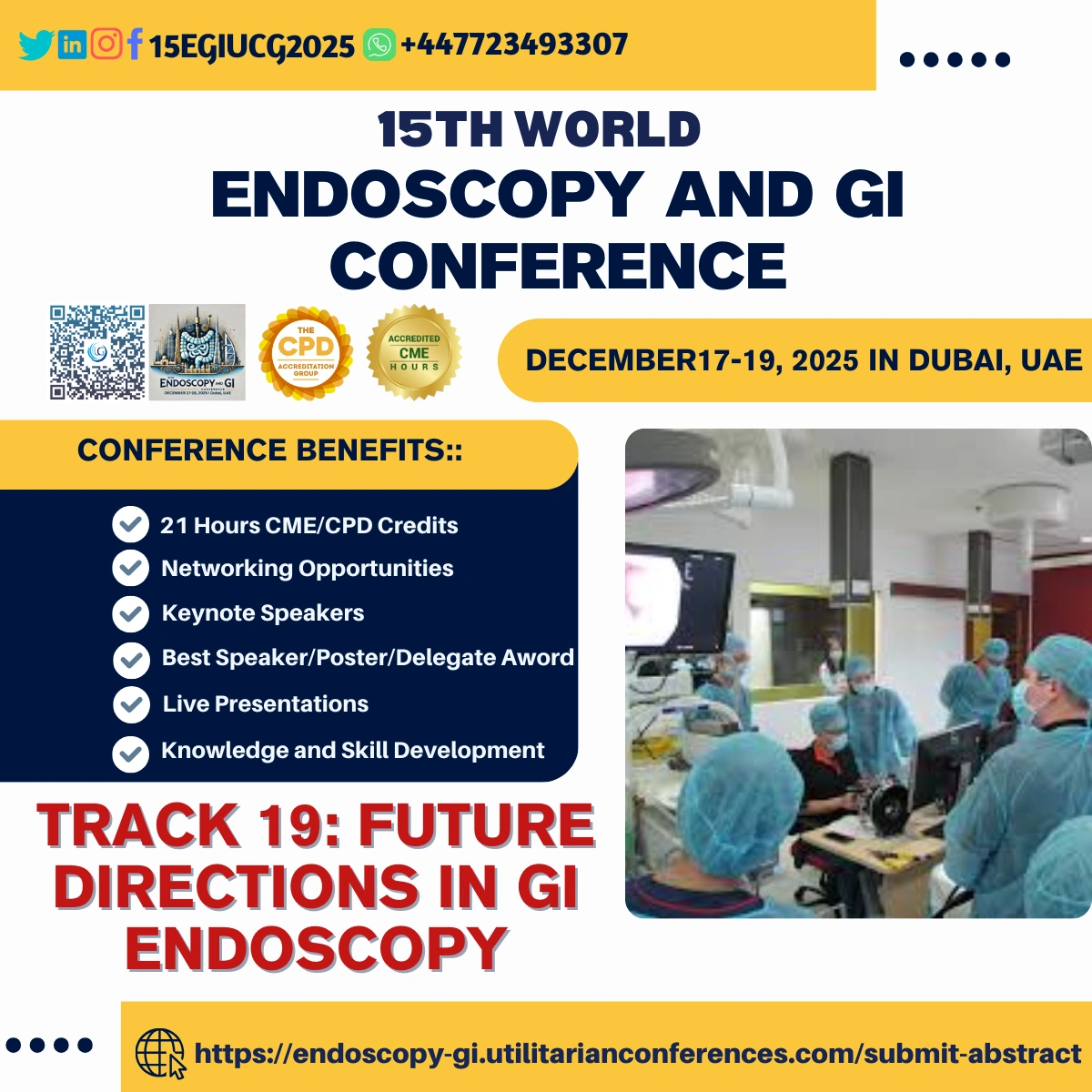Future Directions in GI Endoscopy refers to the ongoing advancements and innovations in gastrointestinal (GI) endoscopy that are expected to shape the field in the coming years. These developments aim to improve diagnostic accuracy, enhance therapeutic options, reduce procedure-related risks, and provide better overall outcomes for patients. As technology evolves, endoscopy continues to transform how GI diseases are detected, treated, and managed.
Key Areas of Future Directions in GI Endoscopy
Artificial Intelligence (AI) and Machine Learning in GI Endoscopy
- AI-Driven Diagnostics: AI algorithms are increasingly being integrated into endoscopic systems to help detect abnormalities like polyps, tumors, and other lesions. These AI tools assist endoscopists by providing real-time analysis of images and videos, improving diagnostic accuracy and reducing human error.
- Machine Learning for Predictive Analytics: AI can also be used to predict disease progression and identify high-risk patients based on endoscopic and patient data. This can aid in early intervention and personalized treatment strategies.
- Image Recognition and Analysis: Machine learning models are becoming more sophisticated at identifying subtle lesions, precancerous changes (e.g., dysplasia), and early cancers that might be overlooked by the human eye.
Robotic-Assisted and 3D Endoscopy
- Robotic Endoscopy Systems: Robotic technology is being explored to provide greater precision, flexibility, and control during endoscopic procedures. Robotic systems can enhance the accuracy of delicate procedures, especially in challenging anatomical locations, and allow for finer movements.
- 3D Visualization: Advanced 3D imaging technologies are being integrated into endoscopic procedures to provide enhanced depth perception and more detailed views of the GI tract. This can improve both diagnostic and therapeutic interventions by giving clinicians a more accurate visual perspective.
Miniaturization of Endoscopic Devices
- Smaller, More Flexible Instruments: There is ongoing progress in miniaturizing endoscopic instruments to make procedures less invasive and more comfortable for patients. Miniature endoscopes can be particularly beneficial in pediatric GI procedures or for patients with more challenging anatomies.
- Capsule Endoscopy Advances: Capsule endoscopy, which uses a small pill-sized camera to capture images of the GI tract, is expected to become even smaller, more efficient, and capable of performing more complex functions. Newer versions may offer improved diagnostic capabilities, such as the ability to biopsy or treat lesions remotely.
Endoscopic Ultrasound (EUS) Innovations
- Integration of EUS with Other Imaging Techniques: EUS is already a powerful tool for assessing the deeper layers of the GI tract and surrounding structures. Future developments will likely involve the integration of EUS with other imaging techniques (e.g., MRI, CT scans) to provide more comprehensive views for diagnosing and staging GI cancers or other complex diseases.
- Needle-Based Biopsy and Therapeutic Interventions: New developments in EUS-guided procedures may allow for more precise biopsies, as well as therapeutic interventions like draining cysts, delivering localized treatments, or placing stents more effectively.
Endoscopic Submucosal Dissection (ESD) and Advanced Therapeutic Techniques
- Improved Techniques for ESD: ESD is already a cutting-edge technique for removing early-stage tumors and lesions in the GI tract, particularly in the stomach and colon. Advancements in ESD technologies will allow for better precision, reduced complications, and faster recovery times.
- Hybrid Therapies: The combination of endoscopic techniques, such as ESD with laser or radiofrequency ablation, is a growing area of interest. These hybrid approaches can improve therapeutic outcomes and reduce the need for more invasive surgical procedures.
Artificial Intelligence-Enhanced Endoscopic Surveillance
- Real-Time Monitoring and Alerts: AI systems could potentially provide real-time monitoring during endoscopic surveillance for diseases such as inflammatory bowel disease (IBD) or esophageal cancer, alerting clinicians to concerning findings while the procedure is ongoing.
- Predictive Models for Cancer Surveillance: AI could play a significant role in the future of cancer surveillance, predicting which patients are at higher risk of developing malignancies based on endoscopic images, histopathology, and genetic data.
Endoscopic Therapy for Obesity (Bariatric Endoscopy)
- New Devices for Weight Loss: The development of new endoscopic devices for bariatric procedures, such as endoscopic sleeve gastroplasty (ESG), intragastric balloons, and other weight-loss technologies, will likely continue to evolve, offering less invasive alternatives to traditional bariatric surgery.
- Minimally Invasive Metabolic Surgery: Future advancements may lead to the refinement of endoscopic metabolic surgeries that focus on weight loss and management of diabetes, with shorter recovery times and fewer complications than current surgical options.
Tele-Endoscopy and Remote Consultations
- Remote Diagnosis and Monitoring: The future of GI endoscopy may involve tele-endoscopy, where procedures or consultations can be conducted remotely, particularly in areas with limited access to healthcare professionals. Remote diagnostic capabilities could be useful in rural or underserved areas.
- Virtual Endoscopy: With advances in imaging and computational modeling, virtual endoscopy using 3D imaging could provide non-invasive methods to simulate the GI tract and assess certain conditions without the need for traditional endoscopic procedures.
Improved Patient Safety and Comfort
- Pain-Free and Sedation-Free Endoscopy: Advancements in non-invasive imaging techniques and sedation methods may lead to the development of pain-free or sedation-free endoscopic procedures, improving patient comfort and reducing risks associated with anesthesia.
- Minimally Invasive Techniques for Complex Procedures: Research is underway to refine minimally invasive endoscopic procedures that can treat complex GI conditions, reducing the need for large incisions, shorter recovery times, and improving patient outcomes.
Integration of Genomics and Endoscopy
- Personalized Medicine: As genetic testing and genomics become more advanced, endoscopy may be used in conjunction with genetic profiling to provide personalized treatment options. This integration could guide the management of GI cancers and chronic conditions like inflammatory bowel disease (IBD).
- Biomarkers and Liquid Biopsy: Advancements in identifying biomarkers and using liquid biopsy techniques alongside endoscopy could help detect early-stage cancer or other conditions more accurately and non-invasively.
Conclusion
The future of GI endoscopy is characterized by remarkable advancements in technology, ranging from AI and robotics to minimally invasive techniques and improved imaging. These developments will enhance the diagnostic and therapeutic capabilities of endoscopy, making procedures safer, more efficient, and more patient-friendly. As these innovations unfold, they promise to significantly improve patient outcomes, reduce procedure-related risks, and increase accessibility to high-quality care in GI health.
Sub Topic: Overview of the trends, innovations, and emerging technologies in GI endoscopy, Integration of AI in real-time image analysis for lesion detection and diagnosis, Development of robotic systems for greater precision and control in complex procedures, Miniaturization of Endoscopic Instruments, Endoscopic Ultrasound (EUS) Innovations, Tele-Endoscopy and Remote Consultations, Integration of genetic profiling and endoscopy for personalized cancer detection, Regulatory and Ethical Considerations in Future GI Endoscopy.





